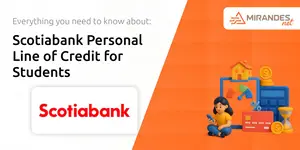
Student debt can feel like an unyielding burden, but understanding your options can spark hope and pave the way to relief. Every borrower deserves clarity, empowerment, and a roadmap to financial freedom.
In this guide, we dive deep into forgiveness and deferral pathways—both federal and private—so you can make informed decisions and take concrete steps toward reducing or pausing your student loan payments.
Before exploring relief programs, it’s crucial to distinguish between loan types. Federal loans often qualify for government-backed benefits, while private loans depend on individual lender policies.
Recognizing this difference is the first step on your journey. Armed with precise knowledge, you can target the options that align with your situation and preserve the benefits you deserve.
Federal programs represent the most powerful tools for borrowers seeking debt reduction or complete forgiveness. Over $195 billion in federal student loan debt has been discharged, offering hope to nearly 6 million Americans.
Each program has specific eligibility, documentation, and application requirements. Consistently tracking payments and employment history ensures you stay on course.
Private lenders lack a unified national framework, but many offer options to help borrowers weather financial storms. Policies vary widely, so direct communication is key.
Always weigh the pros and cons. Refinancing can preserve your federal benefits if you maintain original federal loans, but convert them at your own risk.
Whether federal or private, meeting eligibility requirements is essential. Gather proof of employment, income statements, enrollment verification, and payment records.
Loans in delinquency may need rehabilitation or consolidation. Communicate early with servicers to avoid default and maintain access to relief options.
Applying for forgiveness or deferral can feel daunting, but breaking it into clear steps demystifies the process:
1. Verify your loan type and servicer details.
2. Select the appropriate program and review requirements.
3. Complete and submit applications or forms online.
4. Follow up regularly and retain confirmation records.
5. Update servicers with any employment or income changes.
Consistency and organization are your greatest allies. A simple spreadsheet to document every payment record and communication log can make all the difference.
Understanding the broader landscape can inspire action. Federal student loan debt stands at approximately $1.64 trillion, with average borrower balances around $22,500.
The Public Service Loan Forgiveness program alone has discharged over $79.4 billion. Meanwhile, income-driven plans continue to evolve, offering more tailored relief based on earnings.
Staying informed of legislative changes and administrative updates ensures you won’t miss emerging opportunities.
These proactive steps not only reduce stress but also unlock the most advantageous relief paths tailored to your circumstances.
Student loans can feel overwhelming, but knowledge and persistence light the path to relief. By exploring federal forgiveness programs, negotiating private deferments, and maintaining accurate records, you reclaim power over your financial future.
Remember, you are not alone. Millions of borrowers have successfully navigated these options. Take action today—ask your lenders about forgiveness or deferral, and step confidently toward a debt-free tomorrow.
References













